Senecio haworthii plant is native to South Africa. They belong to family Asteraceae and it is a shrub type dwarf succulent. Interestingly, their leaves form in a striking manner.
They don’t grow very tall once they mature. The name Senecio is a Latin word which means old man in Latin. It relates to the hairy nature of this plant.
They usually comprise with white hairs on the surface of the leaves. The white hairy nature of this plant looks more similar to its cousin Senecio cineraria or dusty miller plant. Leaves of this plant would be cylindrical in shape.
This is a popular succulent among so many people though you can’t spot it more often. Woolly senecio, cocoon plants are some other names which we can use to call this plant in common.
They have inherited these names mainly because of the nature of their leaves.
This plant would be very useful, if you want to add a plant with a unique texture into your indoor garden.

How do I identify a Senecio haworthii?
You could identify them by looking at their leaves as would carry white hairs on the surfaces.
Those are thick, downy and tend to cover the whole leaf with a glowing manner. They form in a cylindrical nature.
Size
They would rise to 12’ ( 30.5 cm) in height and while they would be 24’ (61cm) in width.
Growth
If we give them all their growing conditions , they will grow fast. If we conduct the propagation through the stem cuttings, that will also give you faster results as it will take about just a few weeks to develop the new roots.
Leave’s hairy surface is the most significant feature of these plants. Their leaves form in a cylindrical way.
This plant would tend to stay shorter and hence you could call it a dwarf succulent. They could be 1 foot in height and 2 feet in width once they are fully grown.
When they are in their natural habitat, they would prefer to grow in high altitude places.
One look care guide
| Botanical Name | Senecio haworthii |
| Common Name | Cocoon plant, Woolly senecio, |
| Plant Type | Succulent |
| Mature Size | 12’ ( 30.5 cm) in height 24’ (61cm) width |
| Sun Exposure | Full sunlight to partial sunlight |
| Soil Type | Sandy, well draining |
| Soil pH | Neutral |
| Bloom Time | Summer |
| Flower Color | yellow |
| Hardiness Zones | 10a |
| Native Area | South Africa |
| Toxicity | Toxic to animals |
| Average price | 12 USD |
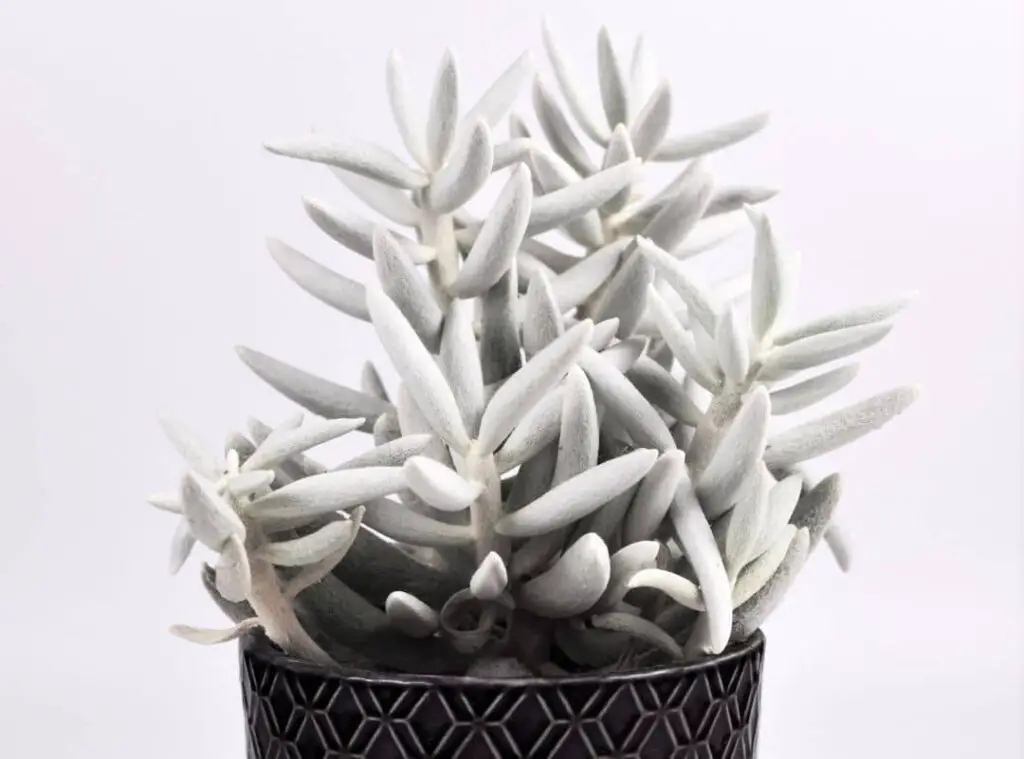
How do you take care of Senecio haworthii ?
Light Requirement
We need to supply them with at least four to six hours of bright sunlight ideally in the morning hours so that they can grow as they wish. Unless, chances are that they could get leggy.
As such, if you consider growing it indoors, ensure that you place it near a bright sunny window where it could grab plenty of sunlight.
Alternatively, in case you cannot provide the natural adequate amount of sunlight for them, try providing artificial light. Grow light would come handy here.
In terms of growing Senecio haworthii outdoors, the best thing is to plant them in a place where they can get natural sunlight for six hours and simultaneously, you should safeguard these plants from the scorching sunlight. Particularly in the afternoon.
Temperature and humidity
When it comes to the temperature and humidity aspect of these Senecio haworthi plants, they would love to grow in 9b-11b USDA zones.
As such, the healthiest temperature for these plants’ proper growth would be between 25° – 50° degrees Fahrenheit (-4° C – 10° C).
Is it cold hardy?
Senecio haworthii cannot withstand the winter conditions and the colder temperatures.
Furthermore, this is not the type of succulent which survives in frost conditions. Hence be mindful if you wish to grow this outdoors.
They do not like frost at all. They cannot handle the colder conditions at all and they cannot withstand the freezing temperature for more than one hour.
Hardiness Zone
Senecio haworthii succulents would prefer to grow in Zone 10a (Minimum 30° F | -1.1° C)
Watering Requirement
Even though Senecio haworthii would love to get water thoroughly, it will affect them badly if we supply excess water for them.
As such, be vigilant when you water them as you should not let too much moisture in the soil. Unless there could be severe repercussions such as root rot.
Before you water them, you should always check whether the soil is still wet or dry to water. You could simply place your finger into the soil and get it clarified whether it is wet or dry.
If you think the soil is soggy and damp, do not proceed with watering. Ideally, wait until the soil gets completely dry before you water them.
Alternatively, you could simply press the Senecio haworthii leaf and check that too. If you feel like it’s firm , you should wait for some time before you water them again as they are still retaining some water in their leaves.
However if you notice that the leaves have shriveled and droopy , you should resume watering them immediately.
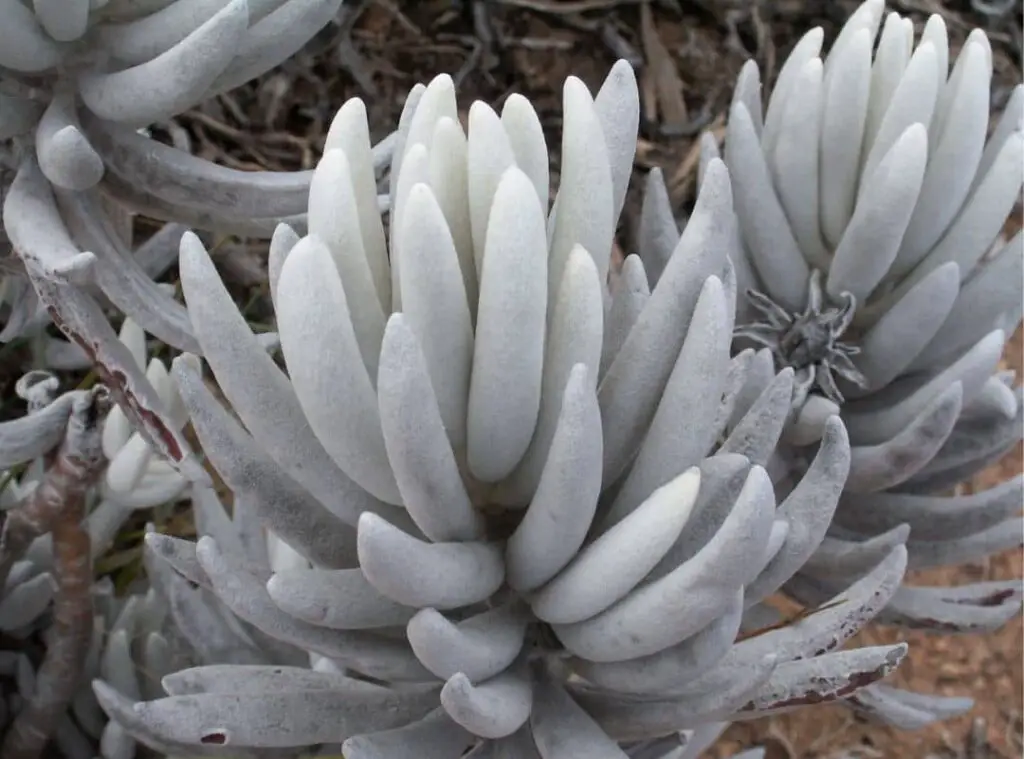
Soil Requirement Type / pH
Senecio haworthii can generally thrive in all types of soil mixes. However , the best would be to supply them with a well draining soil mix.
Just as with other succulents, you could use cactus soil mix or succulent mix as they would suit these plants.
It will avoid the plant staying in moisture for a prolonged period, unless it could badly affect the roots and eventually root rot could occur.
If it is not possible to provide cactus soil mix, you could get your gritty soil mix arranged on your own. For that you only need to blend the potting soil along with inorganic elements such as perlites and pebbles
When they are in their natural habitat, they tend to grow well in gravely or in stony soil. For betterment of their growth, we could use sandy loam potting mix as well.
When you select the pot, ensure that it has enough draining holes so that the draining process could be faster.
Best pH figure should be 6.0-7.0. It would be better to have the neutral condition of the soil mix.
Flowering and Fragrance.
In general, they are famous for the foliage they have. The blooms which they produce are not very significant.
When they blossom, they make flowers in bright yellow colored blooms. Flowers would be very small in size and they usually come out in clusters at the edges of the stems.
You could spot them in between winter and summer.
Pot size Potting and Repotting
You may use a pot which is slightly larger than the surface of your plant. you should use a proper pot type which could help for faster evaporation.
When it comes to repotting, you could do this once every three to four years. Further you should use a larger pot than the initial one which you have planted before to repot them.
Simply take off the plant and clean the old soil around the roots and plant it in a well draining soil mix.
You should do repotting ideally in spring.
Where to Plant
This plant cannot survive in colder temperatures. Hence, if you are someone who lives in an area where the temperature drops to 30° F (-1.1°C), you should plant it in a pot or in a container which you could easily take in and out from the house.
So that you can protect the plant from those conditions.
It could do well in full sunlight to partial sunlight. If you wish to grow this as a houseplant, Best recommended is to grow this plant in a place where it will get at least six hours of sunlight.
It could possibly be a windowsill where the plant can absorb enough sunlight.
Fertilizer and time of year
In terms of feeding these lovely plants, you could utilize a succulent fertilizer every year. Fertilize them during their actively growing season which is the spring.
You could purchase succulent fertilizers from the stores. If not, you could apply a 50 % diluted fertilizer with regular water.
Always try to refrain in using strong fertilizers as they could sometimes harm your plants. Moreover, don’t over fertilize them and don’t do it frequently.
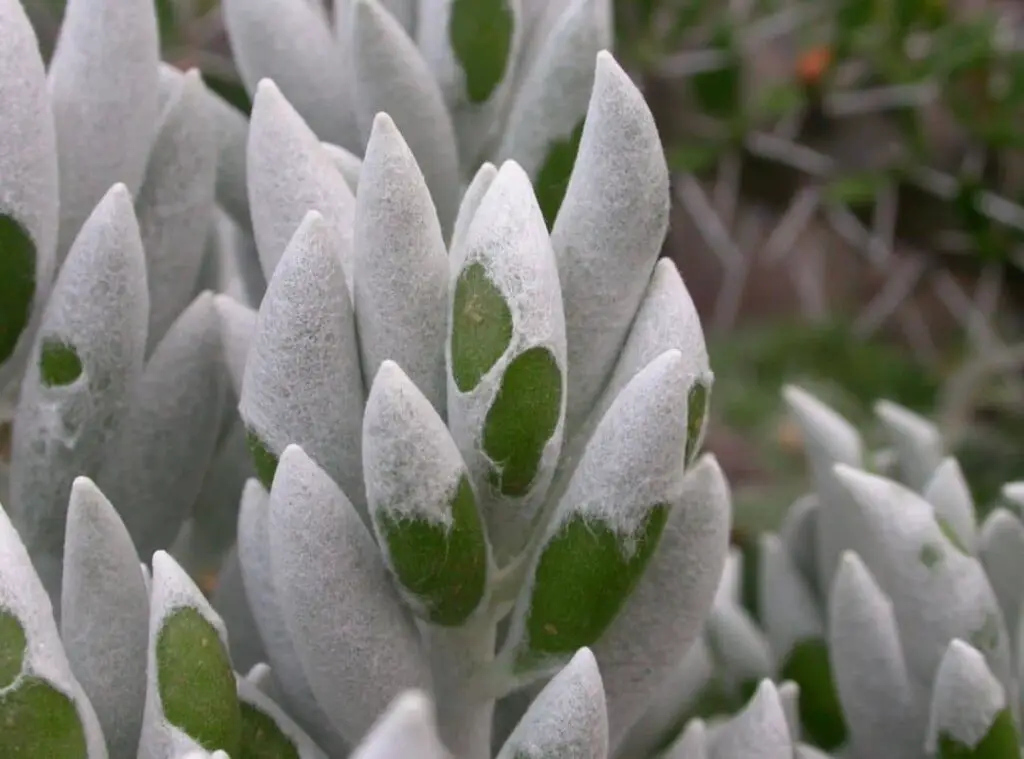
Dormancy
Plants go dormant during the summer season.
Other plants Pairs Well With
These plans would make a perfect pair with Senecio barbertonicus ‘Himalaya’
Can be toxic to pets
Senecios in general are harmful for animals. For the betterment of everybody, it is advisable to avoid kids as well as pets from reaching this plant.
Common bugs and Illness Issues
Cocoon plants are vulnerable to get infected with pests such as aphids. Pests would love to occupy around the bottom of the plant.
If you conduct regular inspections of your plant on a daily basis you could simply identify if there are any pests attacks. You could take them off while using your hands.
Alternatively, you could utilize organic pesticides to protect your plant from pests. Over watering could badly affect the plants by creating root rots.
The other concern is, you could not spot root rot at the initial stage of it. As such be careful with watering them.
If your plant has got soggy leaves and if the plant looks wilting and if the growth of the plant is slower,iit could be a repercussion of root rot.
In addition to this, the plant stem would also be black or brown in color too when the plant rotted.
Special Care tips
These plants are famou as easy to care plants. Chances are that sometimes they could get floppy too. You should Prune them during early springtime. You should trim it until you can spot the firm stem.
You could use them for rooting and making fresh plants. Hence do not waste them. Avoid supplying it with excess water since It could cause root rot.
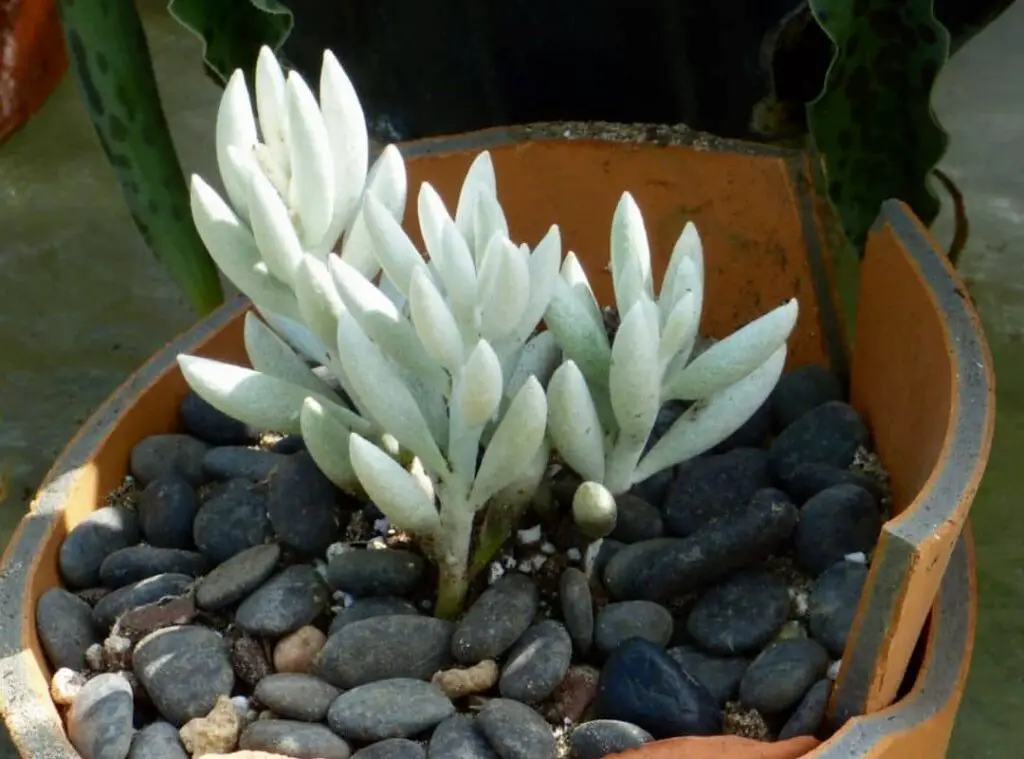
How do you propagate a Senecio haworthii
We could propagate the cocoon plant through stem cuttings and from leaf cuttings. You can count on leaf propagation methods as it will give you the most reliable results.
You could simply take off a full healthy leaf by twisting it from the plant. Ensure that you have taken the full leaf without leaving any part of it remaining on the plant. Leave it until it gets dry and then stick it in well draining soil.
If you wish to propagate them through cuttings, you could cut off a healthy stem cutting whilst using a sterilized knife. Let it become callous and then place it in a well draining soil.
Apart from these methods, you could propagate these through offsets also. You can trim off a healthy offset at the bottom of its plant.
let it dry for some days. then place it in a sandy or cactus soil mix. Water them once the soil is dry. It will take a few weeks to develop new roots.
Senecio haworthii losing leaves and causes
This could possibly be a reason for under -watering. You should resume watering them in a gradual way to treat this.
How do you repot a Senecio haworthii?
When it comes to repotting, you could do this once every three to four years. Further you should use a larger pot than the initial one which you have planted before to repot them.
Simply take off the plant and clean the old soil around the roots and plant it in a well draining soil mix along with a sand mix.
Spring is the best time to conduct repotting.
Senecio haworthii plant benefits
You could use Senecio plants to display ornaments. Many people tend to grow them in containers due to the unique formations of their leaves.
Stems in white and the unique shaped leaves make a beautiful color combination of them.
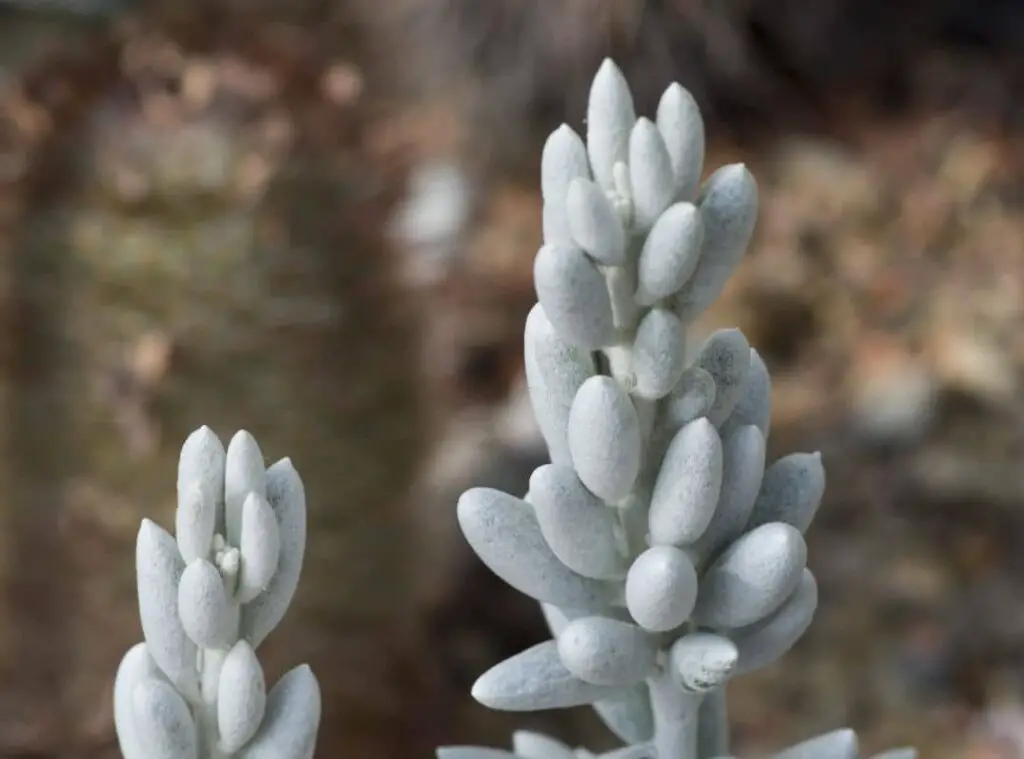
Related questions
Is Senecio haworthii an indoor plant
You could grow this as an indoor plant, however ensure that you place it somewhere where it gets an adequate amount of sunlight.
Ideally near a bright sunny window. If it is not possible to find a source of sunlight naturally, try using a grow light as it will provide you light artificially.
Is Senecio haworthii toxic?
Senecios in general are harmful for animals. They are said to be plants which could majorly be poisonous for farm animals who depend on ragworts.
For the betterment of everybody, it is advisable to avoid the kids as well as the pets reaching this plant.
Do Senecio haworthii need direct sunlight?
They need direct sunlight. We need to supply them with at least four to six hours of bright direct sunlight ideally in the morning hours so that they can grow as they wish freely. Unless, chances are that they could get leggy.
In terms of growing them outdoors, the best thing to do would be to plant them in a place where they can get direct natural sunlight in the morning hours for six hours and simultaneously, you should safeguard these plants from the scorching sunlight also. Particularly in the afternoon.
Should I mist my Senecio haworthii ?
You could mist the leaf during the propagation through the leaf method of these plants. You could do this once every few days.
Read Next: Echeveria Neon Breakers Succulent 16 Care Tips | For Amazing Garden |
